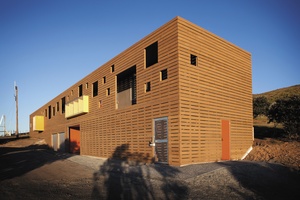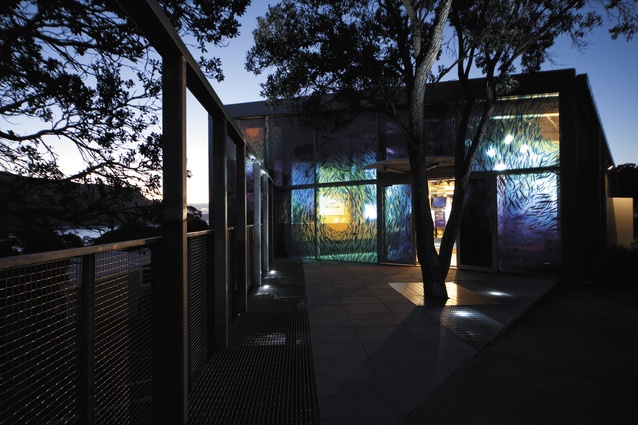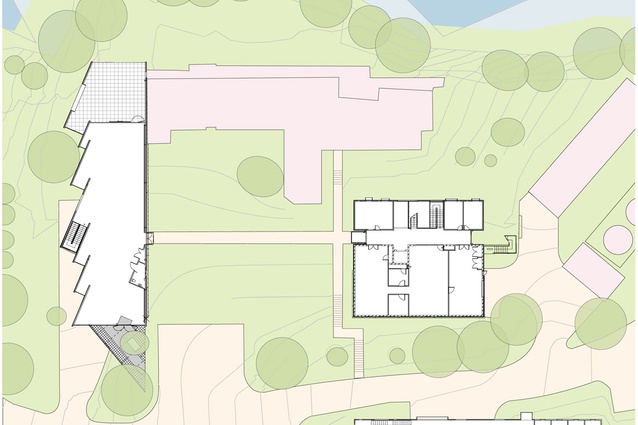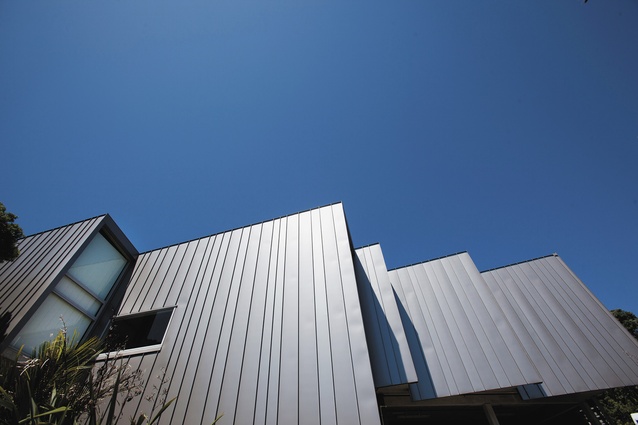University of Auckland: Leigh Marine Laboratory
The University has had a presence in Leigh for many years. Eighty kilometres north of Auckland city on the eastern coast, it is the site of one of the earliest marine reserves and a magnet for marine researchers who have long enjoyed escaping the city to the relaxed set of buildings of the research laboratory. That it is situated in an idyllic spot is a bonus. Cheshire Architects was commissioned to develop a masterplan and has since designed three buildings (with space left for a fourth): the Edith Winstone Blackwell Interpretive Centre to attract visitors, the Science Centre (for the researchers and academics) and the accommodation/workshop block or Bunkhouse.

The Interpretive Centre is simply a hollow, extruded box with a monopitched roof built on the concrete block base of an existing building. The interior was left free deliberately for the fit-out, designed by Rick Pearson with his usual startling clarity and inventiveness. An enclosed deck at the far end gives visitors a breathtaking view of the wild sea from whence come the exhibits.
The Science Centre is a three-storeyed block perched on the side of the hill with a clear organisational scheme. A central spine divides the building in two with offices, collaborative spaces and the main stair on one side and the research labs on the other. The labs become increasingly specialised and secure the higher they are up the building.
Long-term residents and short-term researchers from the University need somewhere to put their heads. The accommodation block is utilitarian in the space it offers but altogether charming in its resolution. A slatted timber rainscreen is detached from the building, and the external stair is squeezed between. The rainscreen is punctured with a series of random, coloured boxes which form places to sit and socialise (one even accommodates a table and bench seats).
Pip Cheshire has designed three unassuming and unpretentious buildings for a marine laboratory engaged in the rigours of research: modest and intelligent with it.















